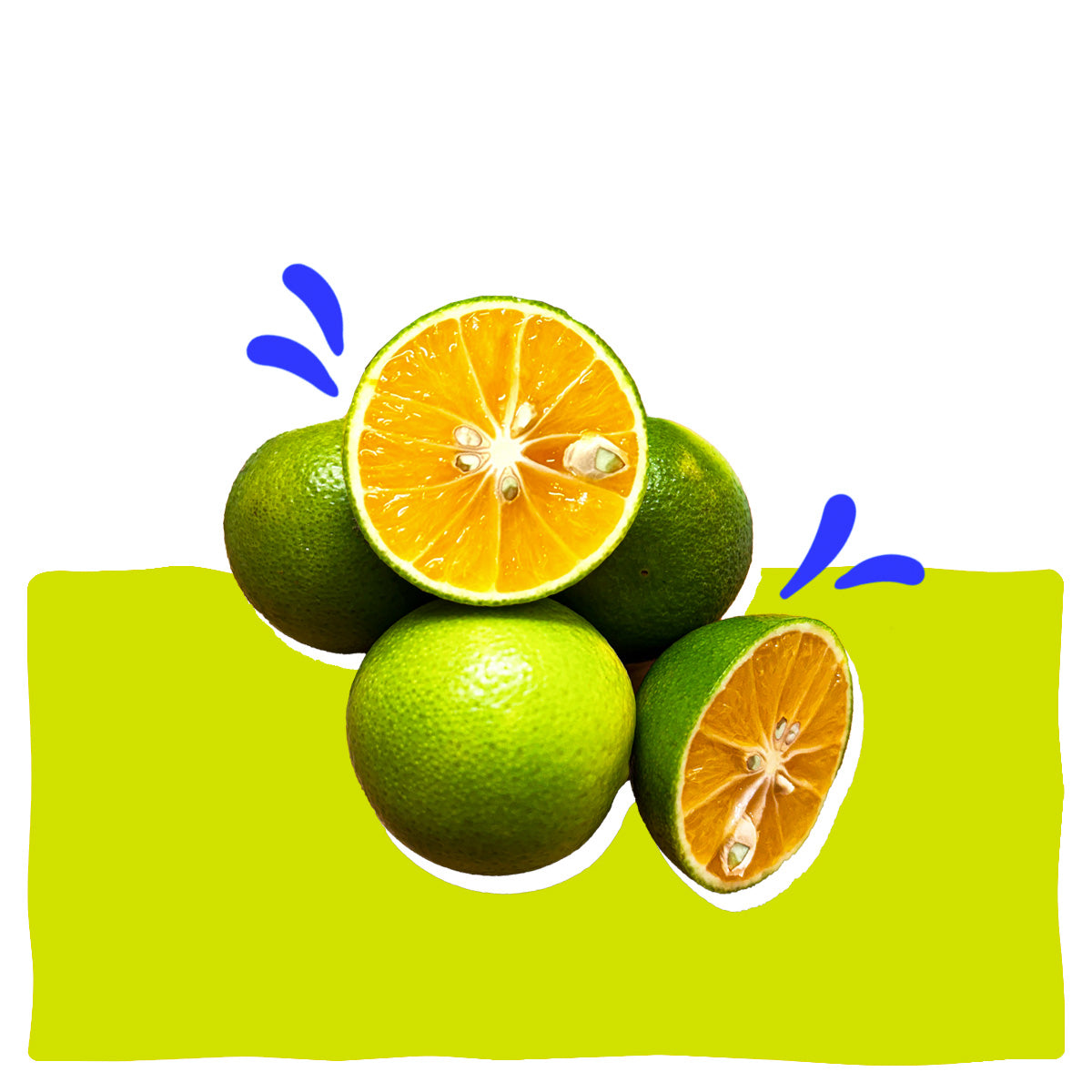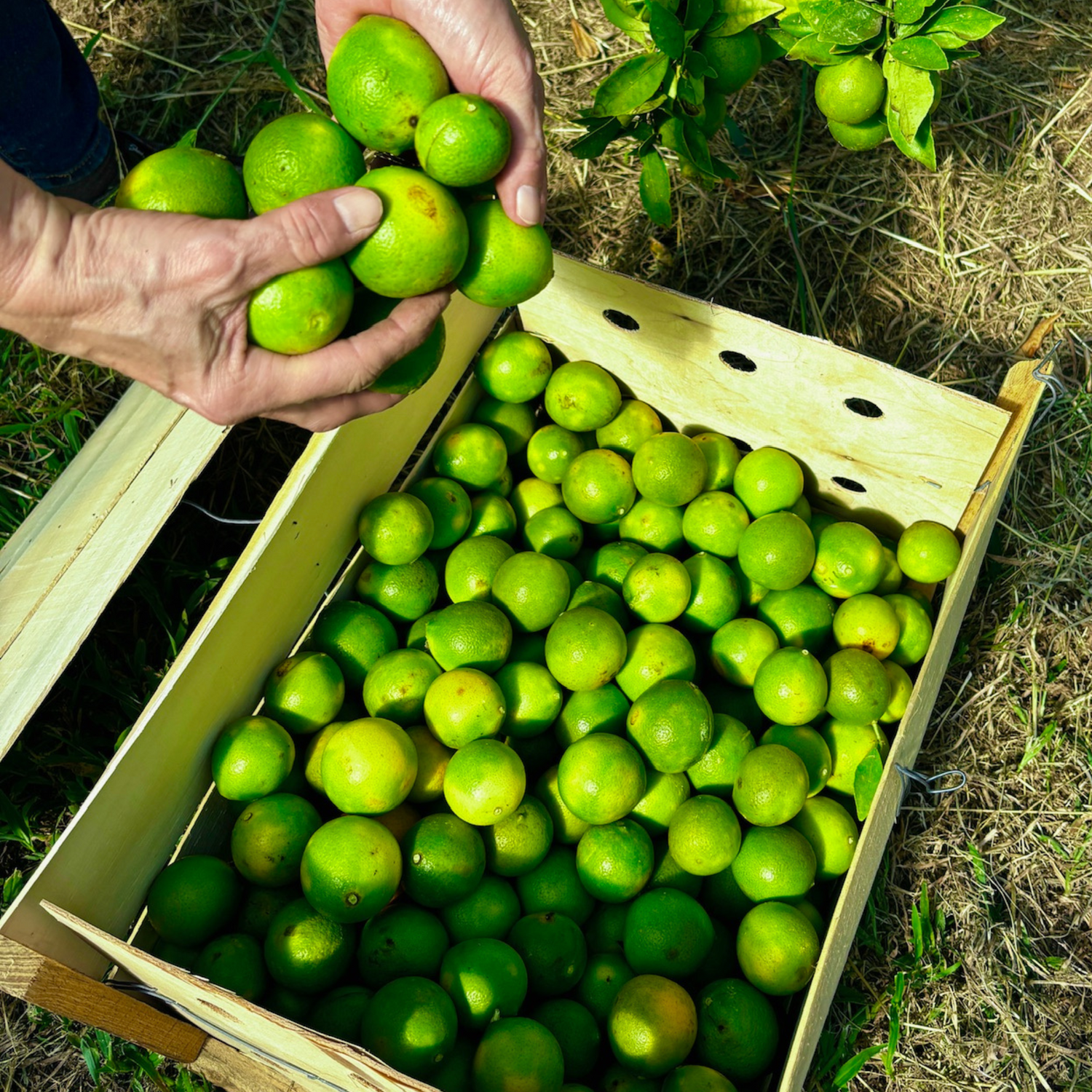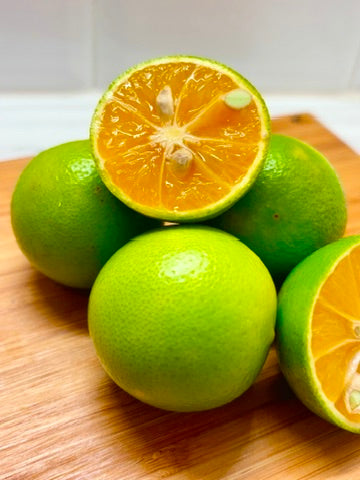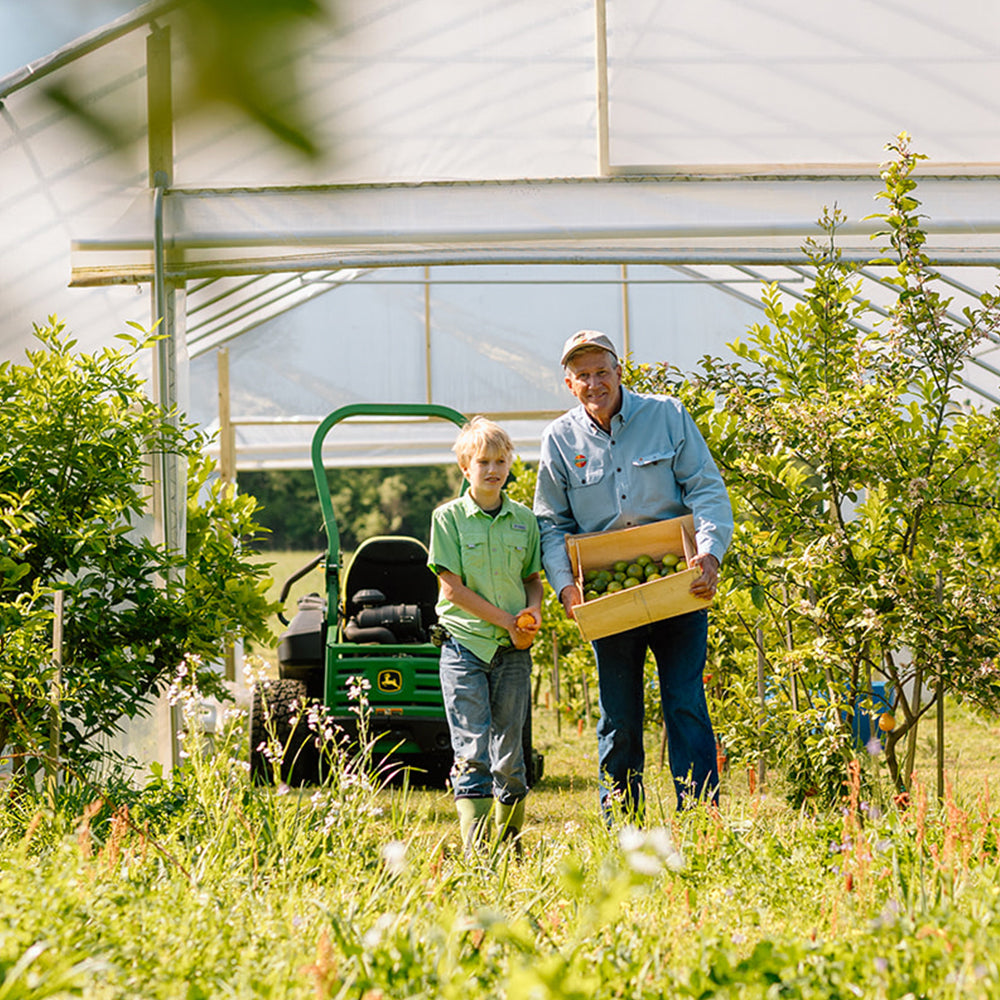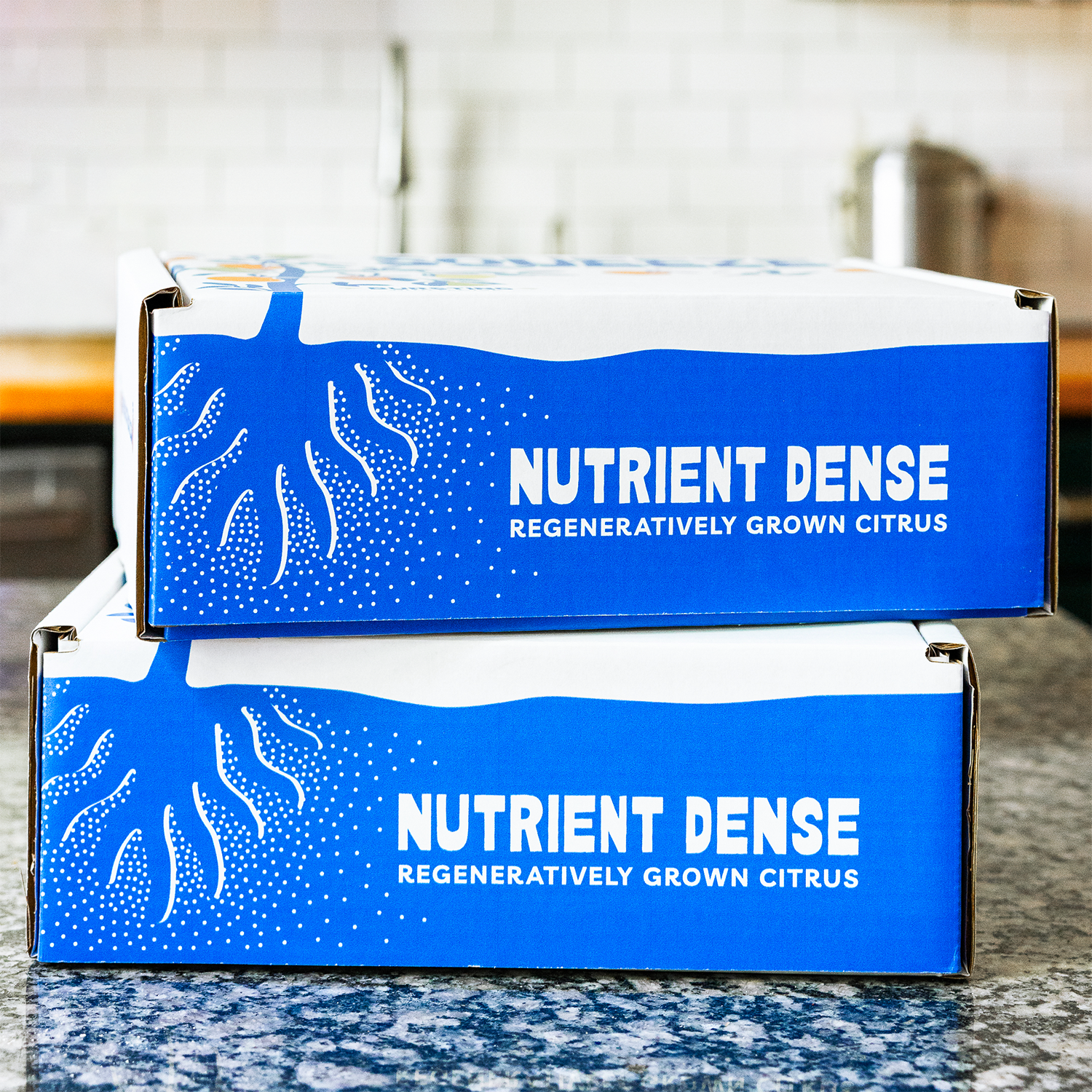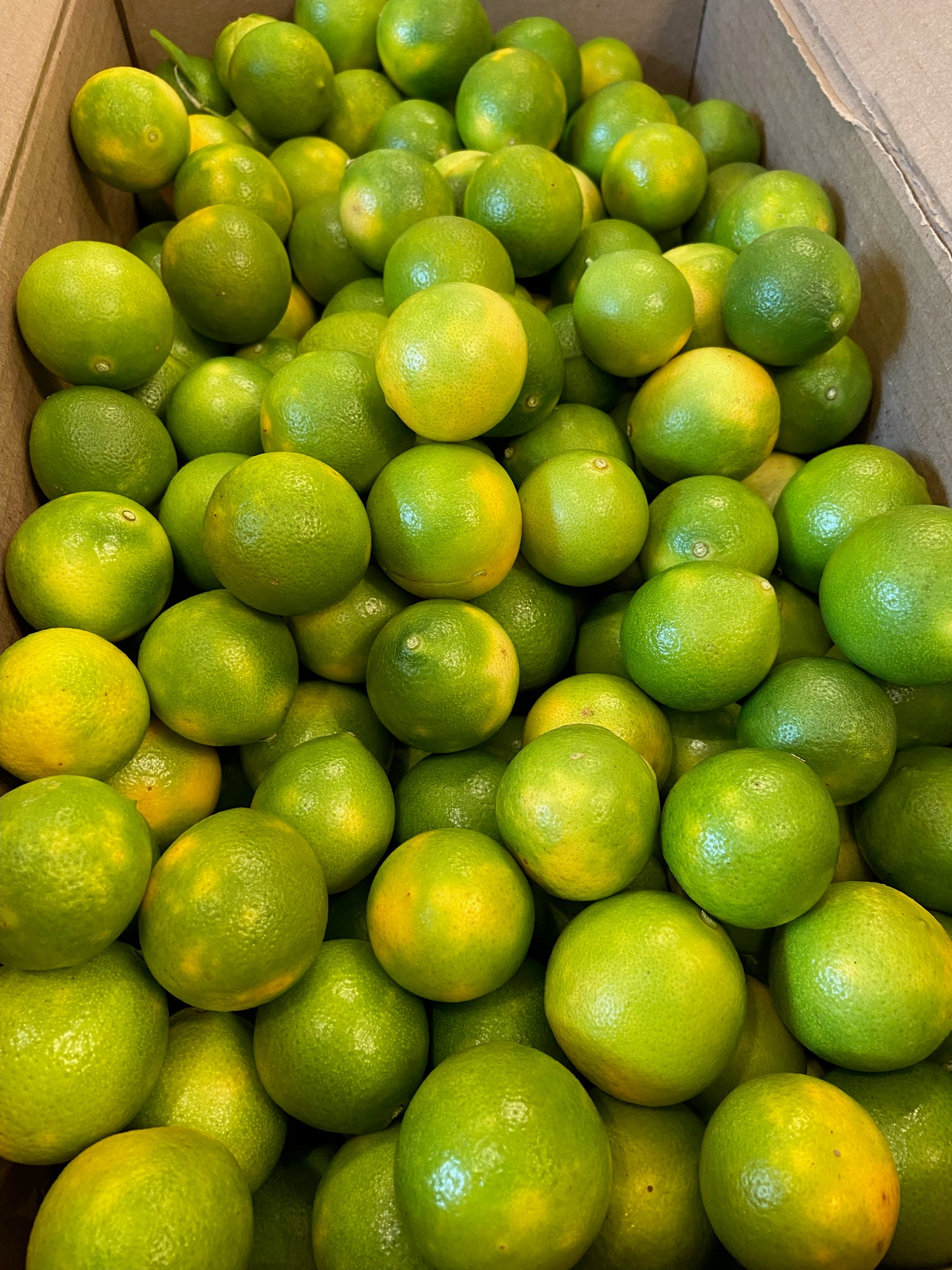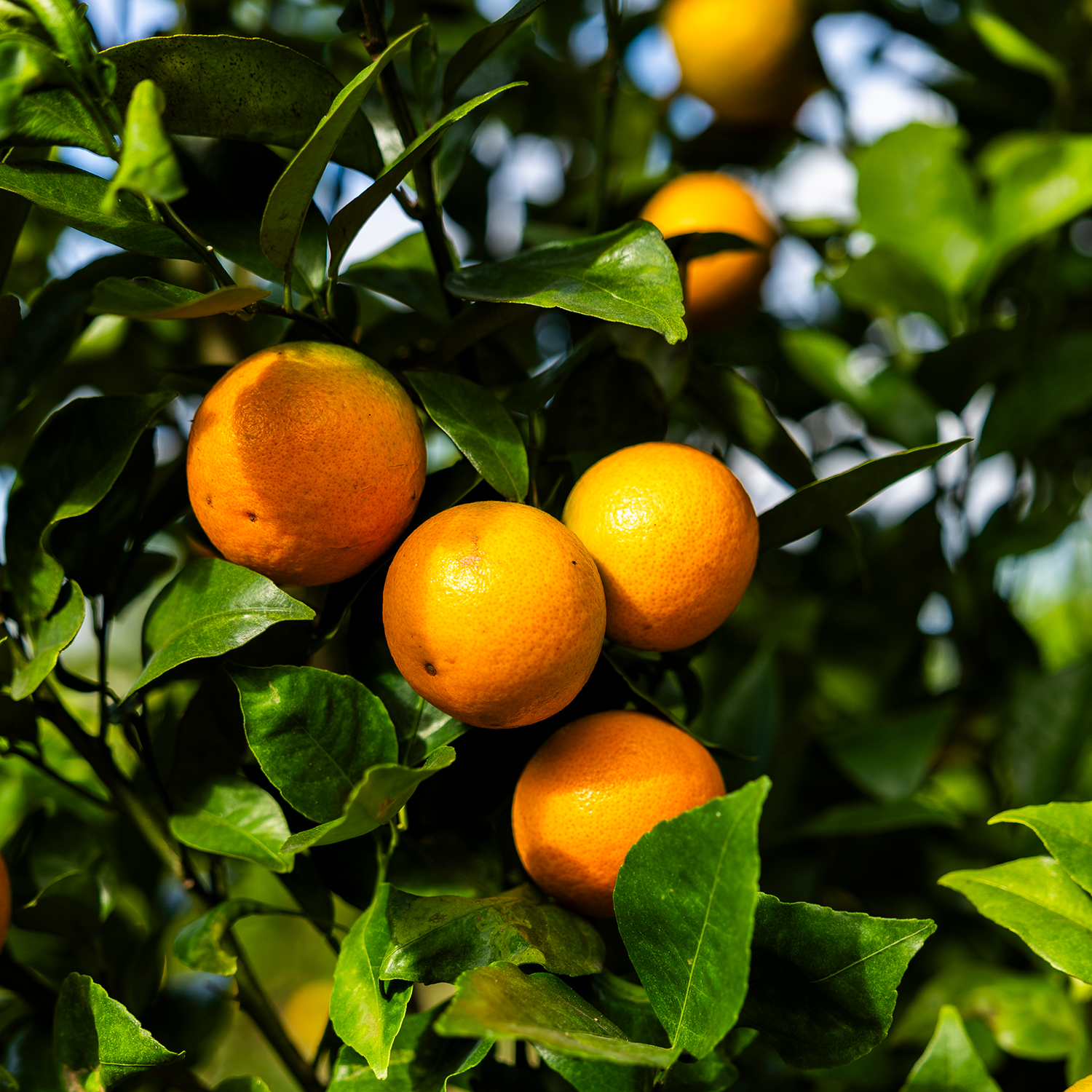Rangpur Lime
ESTIMATED SEASON 🍊 Sept - Oct
- Out of stock (pre-order)
Couldn't load pickup availability
Description
They are a Chef's dream! Small green very juicy limes with light orange flesh. A cross between a mandarin and lemon. Wonderful tangy floral taste that we enjoy in all our drinking water nick-naming it “life-water” because of the amazing nutrient levels.
Shipping
Our citrus is hand picked from our farm in Southwest Georgia and shipped quick - guaranteeing the freshest fruit when it arrives to you.
Seasonal Boxes ship once weekly.
How many per box?
We pack a BIG punch into each of our citrus. To get the same amount of nutrients you’d get from just ONE Squeeze Rangpur Lime you’d have to eat MANY from the grocery store!
6lb. Box: 45-50
12lb. Box: 90-100
22lb. Box: 180-200
All numbers are approximate.
WE TESTED OUR FRUIT AGAINST GROCERY STORE CITRUS. TURNS OUT, WE'RE NOT YOUR AVERAGE PIECE OF FRUIT.

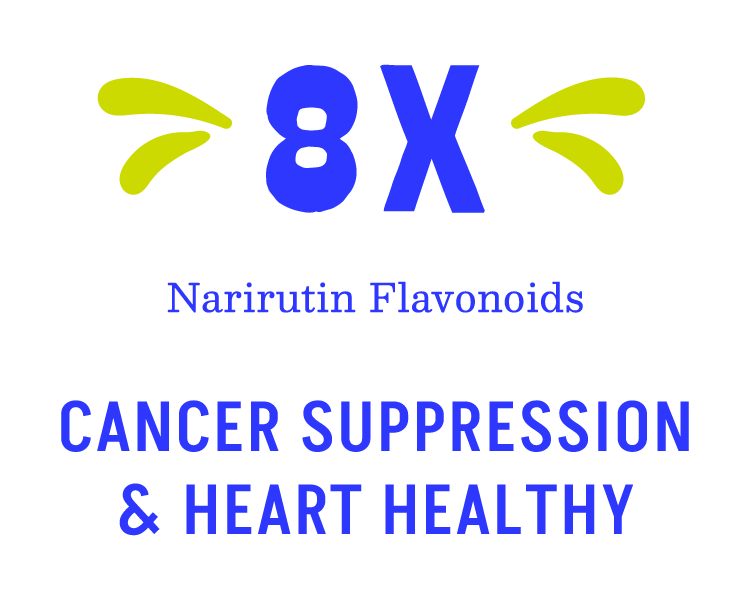


FAQ's
You asked, Herb Answered
How does restoring microbes in the soil affect the nutrients in my fruit?
Microbes were naturally in the soil before industrial agriculture stripped them out (fertilizer, tillage and pesticides). They break down the minerals already present in the ground and make it available for plants, all plants. Think of the trees in the forest… they don’t need fertilizer and barely any pest control. When they make all the nutrients available that a plant could ever need, the plant is full of all the enzymes, hormones, proteins, etc. – bursting with them. Likewise, their fruit is full of this nutrition and passes it on to us. See our blog “Hollow Food” for a detailed explanation.
Why is Organic and Regenerative fruit more expensive?
Squeeze Citrus is a small, meticulously managed grove that requires a careful hands-on approach in caring for our fruit. Our Organic and Regenerative practices are labor-intensive and time-consuming. We apply natural nutrition every two weeks, and we hand weed and mow around each tree because we don’t use chemical herbicides. This approach leads to healthier trees, but they grow more slowly, which means our harvests are delayed by at least a year and produce less fruit overall.
Managing a regenerative grove requires much more hands-on effort—what we do on our small grove could manage 3-4 times the acreage of a conventional grove using chemicals. However, the payoff is in the quality: our fruit is far more nutrient-dense, often 5 to 10 times richer in nutrients than conventionally grown fruit. This is why our citrus may cost more, but the value in terms of health benefits and environmental impact is significantly higher.
Why do organic farms look so “raggedy?”
It’s not weeds like you might think. Those are “cover crops” - varieties chosen for certain characteristics and planted everywhere intentionally. Every plant, including cover crops, exude (secrete) up to 40% of all the sugars they produce out into the soil to feed the microbes! This is the natural system – creation. A beautiful cycle is generated: sun’s energy > cover crops > microbes > tree > fruit > You!
What made you decide to be a “regenerative”grower?
A loaded question. I (Herb) spent my whole career in the pesticide industry doing everything from field testing new chemicals all the way to marketing. We always did what farmers demanded: “Get us something to kill these pests!” Most people in the pesticide industry believe they are helping the farmers grow food to feed you. We didn’t know the damage we were causing. Only when I decided to become a grower myself did I do the research and discover that an entire ecosystem in the soil was being destroyed by industrial agriculture. I made a drastic change and had a lot to learn but it has been incredibly rewarding. And the result has been amazing nutrient dense fruit that is 3X, 5X, 10X more nutritious and more!
What is the “Season” for citrus?
All citrus bloom first thing in the spring and then it takes all year to grow fruit. Each variety takes a little different length of time. Some varieties, like grapefruit, can take over a year for the fruit to mature – that means you can have almost ripe fruit and new blooms together on the same tree. Some varieties ripen on the tree and need to be picked at an exact time, others (grapefruit again) can hold on the tree for months and be picked when it’s convenient for us or when you order. Our biggest threat in South Georgia is a freeze. We try to harvest between Nov. 15th and the end of January to avoid February and March freezes which might ruin the fruit.

